Do you compliment your child’s artwork? (I’m sure you do)
Do you tell them how beautiful it is? Is that a good thing? What could be wrong?
There are so many ways to help a child grow through his or her artwork. We can send them to classes, teach them ourselves, give them many materials to experiment but, believe it or not one of the best ways to help children grow through their art is by how we react to our children’s artwork.
The formula for relating to a child’s artwork is quite simple but, let me begin by describing the 4 types of comments that are not valuable. I will then give you 6 ways to react and then put those comments into action with the artwork displayed here.
There are 4 ways that most adults relate to children’s artwork.
COMPLIMENTING: “That’s beautiful…” “That’s very good…” etc. Of course, we all do this and think we are doing what is best for the child.
However, telling a child their work is beautiful all of the time is overused and pat. They are compliments that lack sincerity and really don’t address the child’s efforts. A child may well begin to wonder how it is that his representational man and his sister’s scribbles elicit the same reaction, and will begin doubting your sincerity.
VALUING: “I like that”. Children’s art should not be done to please adults. This shows a value for the product over the process.
QUESTIONING: “What is that?” Many young children who are just making scribbles and free art cannot verbalize what they have made or are not even ready to make representational drawings. Unless they are making a predetermined project it is best to just ask them to tell you a bout it.
CORRECTING: If the point of educational arts is to have the child do art according to his/her level, it would not be appropriate to guide them to do things a “right” way.
So what is the right way to react to children’s art?
The answer is that basically in a nutshell…..
Notice that artwork but really notice it and comment on it. That’s it.
To help you out with this seemingly overly simplistic concept I have listed 6 attributes of artwork that you can comment on and we will then relate those comments to some of the images we have here.
- Color
- Space used
- Lines and how many
- Amount of materials used
- Pattern and placement
- Use of paintbrush or other materials
Comments like “Oh I see you used 3 colors” or “You left a lot of space around that shape you make” does a few things.
- It makes the child feel like you really notice what he or she did.
- It makes the child start to think about what he did.
- It gives real importance to her artwork.
- It makes the child feel good about herself.
As an example, this is what I would say about the painting above. “Oh! I see you were using a lot of primary colors and you filled in all the empty space”. OR “Isn’t it amazing how colors can look so different when surrounded by other colors”. “Can you tell me what you did to get the colors to look so bright?”
Or about the next picture
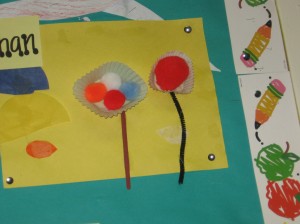
” I see you decided to make 2 flowers. You used one large pom pom for the middle and 4 small pom poms for the inside of the second flower”
Or What about this one
I see you used very soft colors. You made some yellow and orange shapes in the middles and then you put some curvy lines around those shapes. I could tell you were moving your wrist around a lot when you were making this painting”
The point is for you to STOP and really notice what the child did and comment on it.
Now of course you don’t have to go crazy with and think that if you tell your child once in a while that their picture is beautiful, they will be damaged for life and you will have to pick up the pieces of their life. (lol)
The point here is just to help you understand the best ways to react to children’s artwork in the most developmentally appropriate manner.
No one is perfect (except maybe you) and we don’t bat 100% all the time.
Pin to save for later

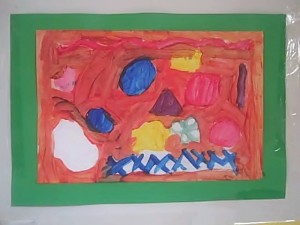
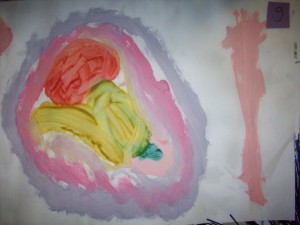
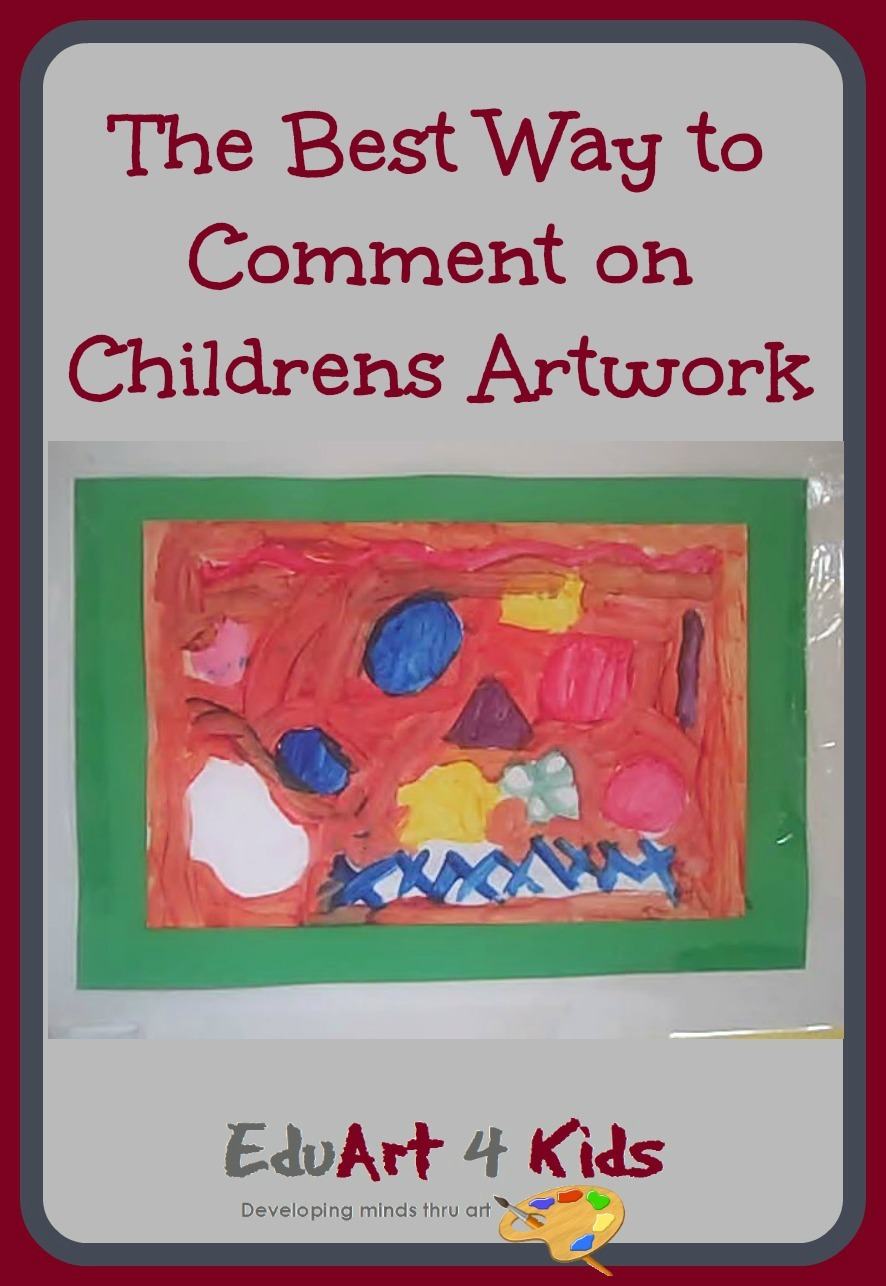
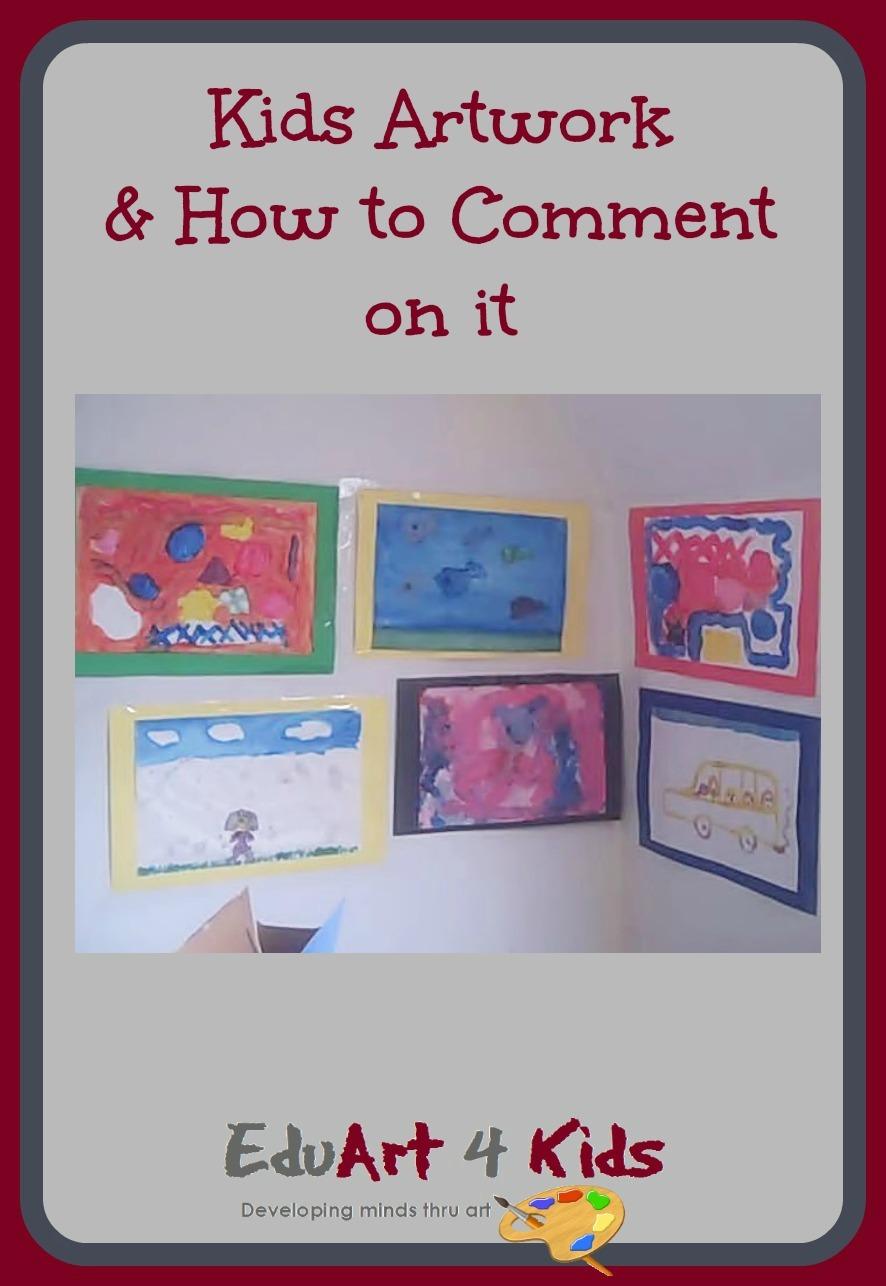


i enjoyed reading this particular post! i am a clinical social worker and have worked with kids during my 10 yrs as a therapist. the comments you gave as examples leave out the judgments of adults and allow the child to be free in his/her expression of art. the child doesn’t have to worry about pleasing anyone; about his art being right or wrong! and i think that is a beautiful way to nurture the little ones’ creativity and self-love. thank you.
Thanks Maia
This is great! I’m an Art teacher and I have challenges with the strategy in give feedback for my student’s work in a way they will understand. This is helpful. Thanks!
I enjoyed reading the article above , really explains everything in detail.
This is a helpful reminder to focus on the details in children's artwork rather than just offering generic praise.